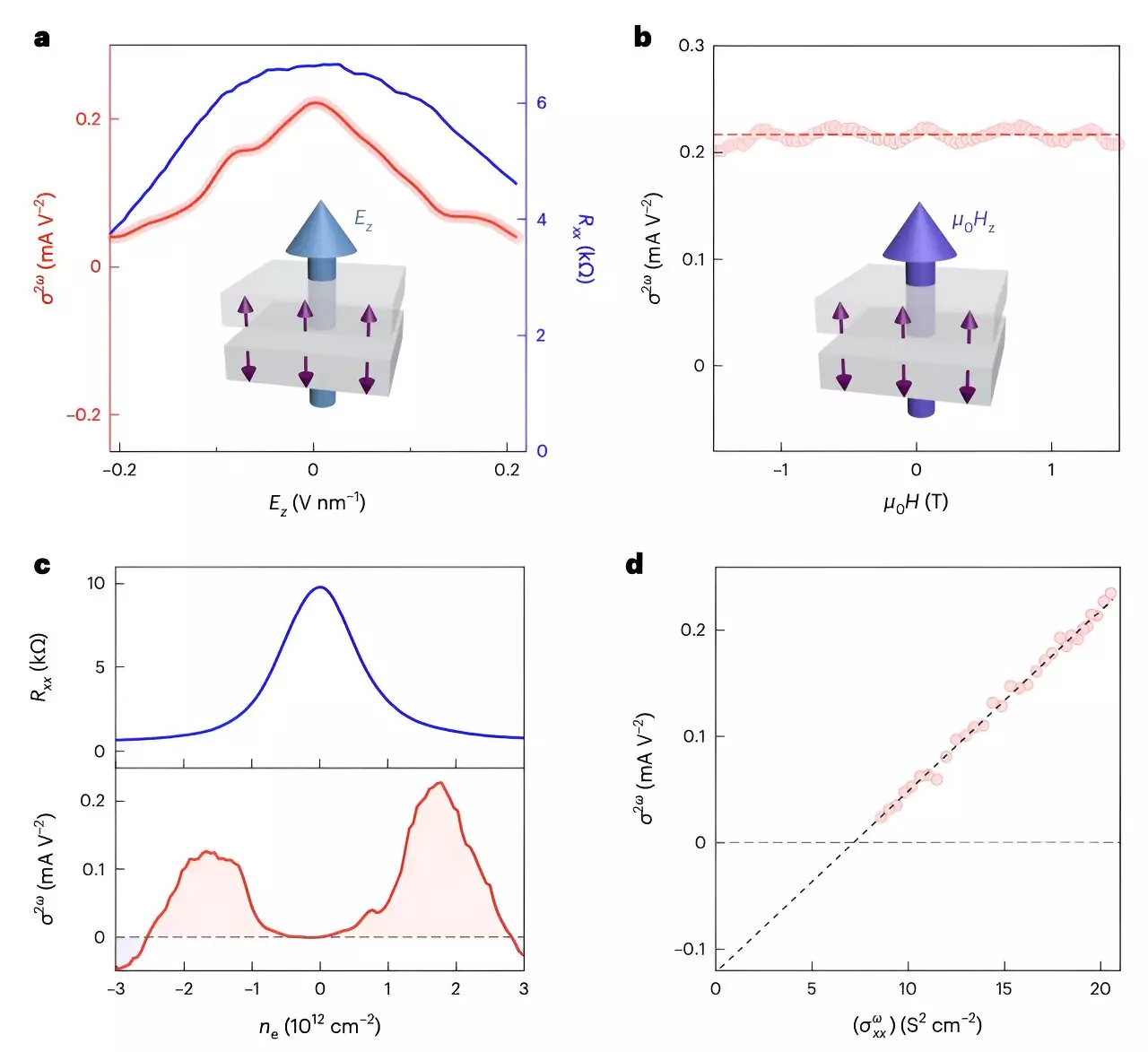Antiferromagnets are a unique class of materials where the magnetic moments of adjacent atoms are arranged in a manner that their opposing orientations cancel each other out. This alignment results in the absence of net magnetism, setting these materials apart from traditional ferromagnets. Despite their lack of macroscopic magnetism, antiferromagnets demonstrate a plethora of intriguing properties that make them promising candidates for advanced technological applications, particularly in the realms of spintronics and electronics.
Recent investigations led by researchers from Harvard University have shed light on an exciting phenomenon observed in even-layered MnBi2Te4, a notable antiferromagnetic material. This discovery reveals the presence of an antiferromagnetic diode effect, which refers to the ability of the material to allow electrical current to flow in a singular direction, even in the absence of net magnetism. The implications of this finding are profound, as they could facilitate the development of innovative technologies, including in-plane field-effect transistors and devices for harvesting microwave energy.
The Diode Effect and Its Significance
The diode effect, characterized by a one-directional flow of electric current, is well-documented and crucial in modern electronics. Applications ranging from radio receivers to digital circuits extensively utilize materials exhibiting this effect. Additionally, its potential extends to temperature sensors and microwave circuits. In recent developments, researchers also identified a superconducting diode effect in materials lacking a center of symmetry; these non-centrosymmetric polar conductors showcase a fascinating interplay between superconductivity and diode functionality.
The Harvard research team focused their efforts on probing the existence of a similar diode effect within the antiferromagnetic topological insulator MnBi2Te4. Their findings challenge pre-existing notions regarding diode behaviors in centro-symmetric crystals, revealing that such materials can still exhibit non-traditional transport phenomena. As articulated by the researchers, the realization of the antiferromagnetic diode effect in a crystal that does not display directional charge separation represents a significant advancement.
To explore the dynamics of even-layered MnBi2Te4, the researchers constructed devices featuring two different electrode configurations. The first design employed traditional Hall bar electrodes, facilitating the measurement of the Hall effect, while the second configuration utilized radially distributed electrodes, ingeniously arranged around a central point. Through rigorous experimentation, the team observed the anticipated antiferromagnetic diode effect across both device structures, characterized by nonlinear transport behaviors.
The researchers employed a variety of advanced techniques to confirm their findings, including spatially resolved optical methods and electrical sum frequency generation (SFG) measurements. They reported substantial second-harmonic transport within the nonlinear electronic devices enabled by the compensated antiferromagnetic state of even-layered MnBi2Te4. This supports the notion that the antiferromagnetic diode effect holds promise for innovation in the development of efficient in-plane field-effect transistors and sophisticated microwave energy harvesting devices.
The implications of the antiferromagnetic diode effect extend far beyond the immediate applications in electronic devices. The authors of the study emphasize its potential as a cornerstone for constructing antiferromagnetic logic circuits and advanced spintronic devices. As these circuits operate on the principles of spin rather than charge, they present a unique opportunity to develop technologies with unprecedented efficiency and speed.
Moreover, this research opens the door to further exploration into the nonlinear responses of quantum materials, fostering a deeper understanding of their properties and potential applications. With the observed antiferromagnetic diode effect positioning itself as a catalyst for technological innovation, the future of electronics and spintronics appears poised for transformation.
The study of the antiferromagnetic diode effect in even-layered MnBi2Te4 not only enhances our comprehension of antiferromagnetic materials but also paves the way for breakthroughs in the field of electronic engineering. As research in this domain progresses, we can expect to witness novel applications and devices that harness the unique properties of antiferromagnets, fundamentally redefining the landscape of technology as we know it.


Leave a Reply